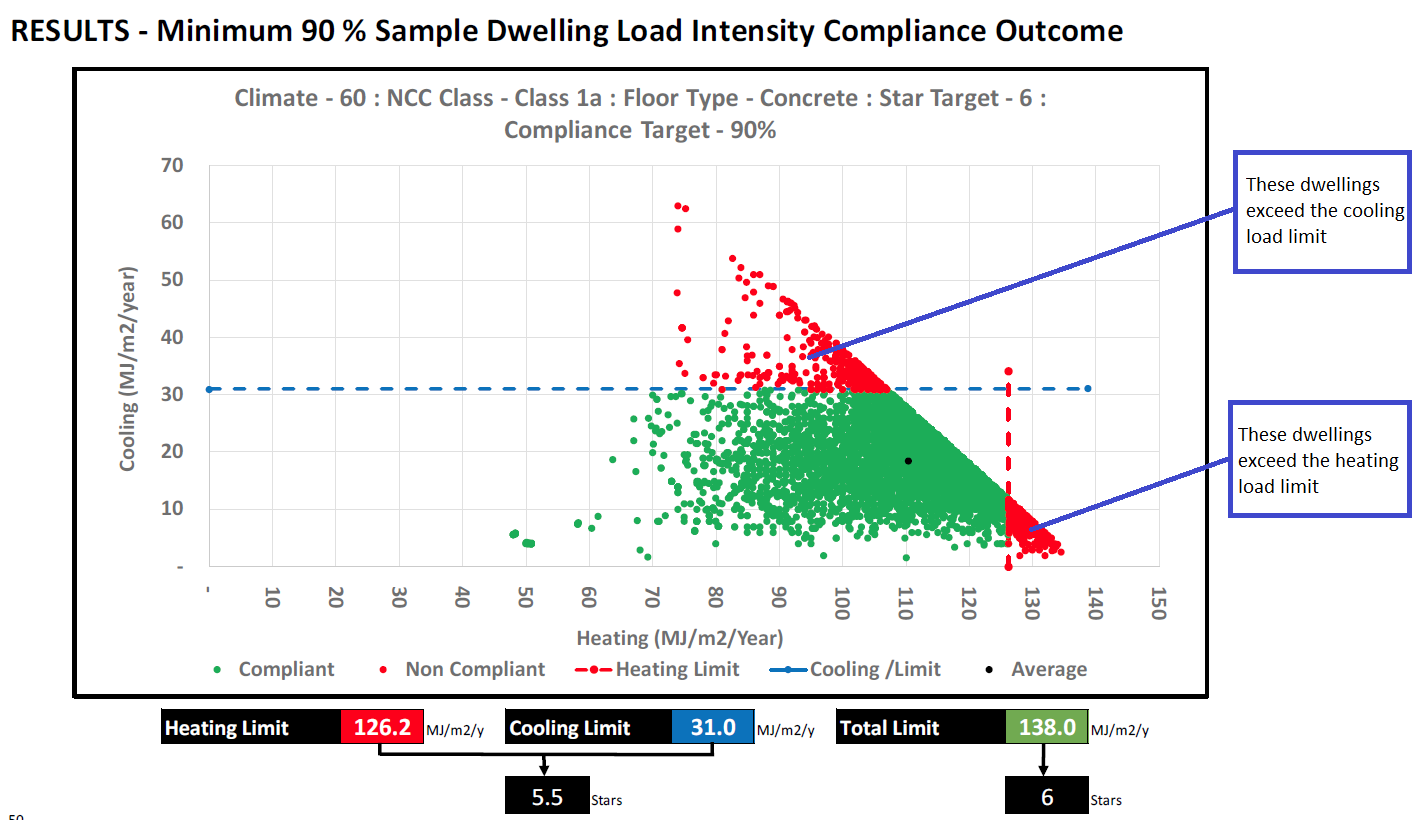NCC 2019 proposes heating and cooling load limits for NatHERS assessments
TONY ISAACS offers Education In Building an insight to the NCC 2019 proposed heating and cooling load limits for NatHERS assessments
Details of proposed changes for NCC 2019 have been released. They include an upper limit on heating and cooling loads in addition to the star rating. The proposed NCC 2019 changes are subject to public comment and may be changed or not included at all. This article describes how the load limits were developed, how they would affect dwelling design and how the load limits may be applied in the field.
How were the load limits developed?
The heating and cooling load limits were developed using the CSIRO and Sustainability Victoria NatHERS portal data i.e. results from real ratings. The limits were set to capture the highest 5% of heating and cooling loads in for each climate zone.
The graph below shows the distribution of heating and cooling loads for Class 1 dwellings on a concrete slab floor in climate zone 60 (Tullamarine):

This change makes the NCC more like BASIX which sets caps for heating and cooling. Unlike BASIX, there is also total load limit too i.e. the current 6 stars requirement. Like BASIX, separate limits are provided for slab on-ground and suspended (timber or concrete) floored dwellings, and Class 1 and 2 buildings. Class 2 dwellings will have a maximum load limit and an average load limit over the whole building just like the current minimum and average rating.
What would the load limits mean for dwelling compliance?
There has been some criticism of both the NCC and NatHERS for failing to control overheating. The load limits provide a first step toward providing control over loads in each season. Complying with the cooling load limit does not mean dwellings will never get hot. The NCC is a minimum standard. However, as you can see above, a few dwellings have very high cooling loads and they will be significantly improved. Note that many more Class 1 dwellings have quite low cooling loads, so the criticism is not true across the board. More importantly, it provides a mechanism to give greater control over seasonal performance if it is needed in future.
ABCB will soon publish an impact statement for the load limits. This is expected to show that, on average, the extent of design/specification changes required to comply with the load limits would be minor e.g. using lighter colours or trimming glazing areas on poor orientations.
The load limits describe a load which is considered to represent poor performance for the first time. Assessors will be able to give feedback to their clients based on the load limits e.g.: “this has a cooling load close to the limit, are you sure you want this house to be close to the worst 5% in this climate zone?”. This feedback can help improve design practices over and above minimum regulatory requirements.
How might it be assessed?
If the proposed changes for split heating and cooling were agreed to be implemented, NatHERS software tools would be used to calculate the load limit for each dwelling and report compliance with load limits in the Universal Certificate. Group Certificates for Class 2 would also need to be amended to calculate average and maximum load limits in a building. If you exceed one of the load limits, you would not comply with the NCC requirements, even if you achieve the minimum required star rating.
If it is agreed to proceed with these changes, a CPD unit will be developed for Education In Building on the new heating and cooling load limits.
Tony Isaacs was one of the consultants who developed the load limits.

